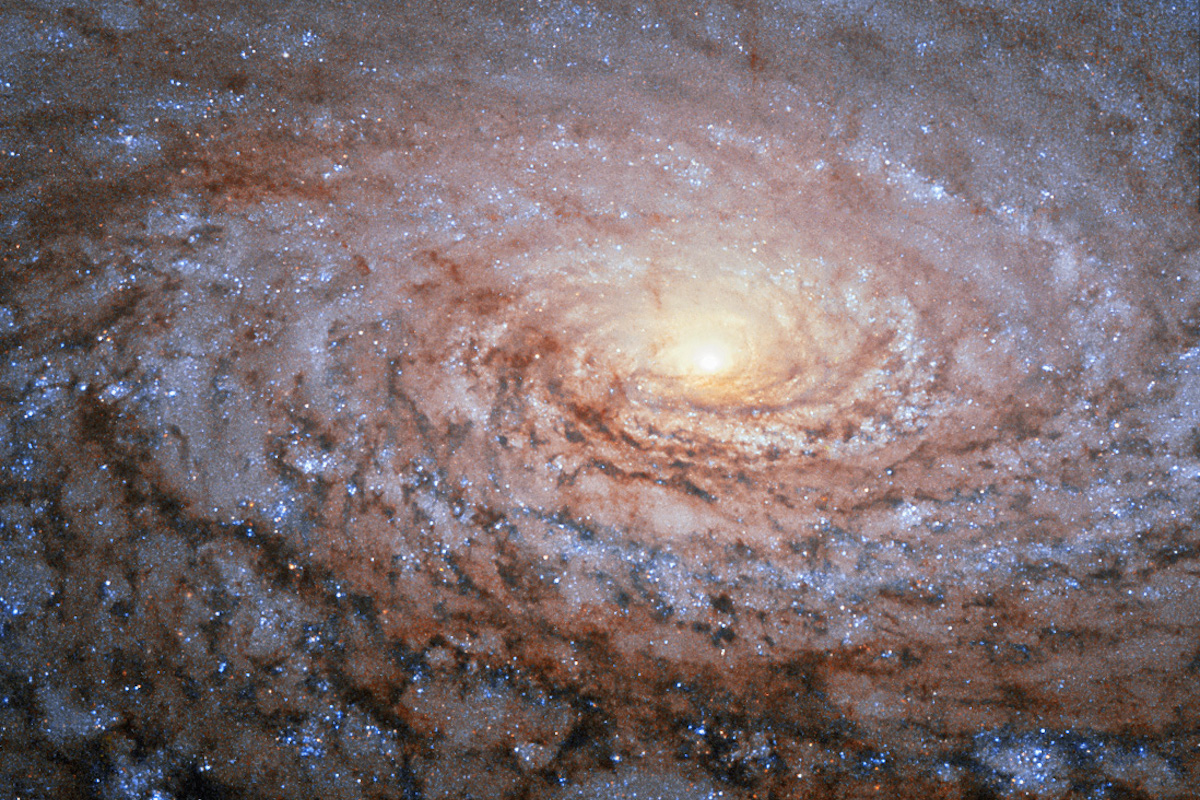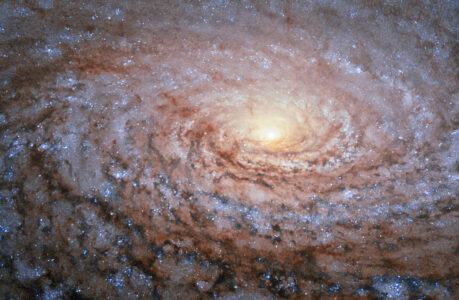Unveiling the Mysteries of the Sunflower Galaxy and Its Hypnotic Spirals
The universe is a vast and wondrous place, filled with countless celestial objects that ignite our curiosity and awe. Among these captivating wonders is Messier 63, commonly known as the Sunflower Galaxy. Named after its striking resemblance to a blooming sunflower, this spiral galaxy has fascinated astronomers for centuries. In this article, we embark on a thrilling journey to investigate Messier 63, exploring its mesmerizing spiral arms and unveiling the secrets it holds.
1. A Galaxy in Bloom
Messier 63, located approximately 37 million light-years away in the constellation Canes Venatici, is a spiral galaxy that belongs to the M51 Group, which also includes the famous Whirlpool Galaxy (Messier 51). With an apparent magnitude of 9.3, it can be observed with a good-sized amateur telescope under dark skies. Discovered by Pierre Méchain in 1779, this celestial gem was later added to Charles Messier’s catalog in 1781.
2. The Enigmatic Spiral Arms
One of the most captivating features of Messier 63 is its well-defined and prominent spiral arms. These graceful arms, adorned with clusters of young, hot stars, stretch outward from the galaxy’s bright central region. The Sunflower Galaxy’s spiral arms are a result of density waves propagating through its disc, causing material to compress and trigger the formation of new stars.
The intricate structure of the spiral arms is a testament to the galaxy’s dynamic nature. As stars are born, evolve, and eventually die, they leave behind a tapestry of cosmic debris and gas, which weaves through the arms. These stellar nurseries are hotbeds of star formation, as the gravitational interactions between gas clouds and the density waves compress the material, igniting the birth of new stars.
3. Unveiling the Star-Forming Regions
Within the mesmerizing spiral arms of Messier 63, numerous star-forming regions dot the landscape. These regions, known as H II regions, are characterized by their abundance of ionized hydrogen gas. As massive, young stars emit intense ultraviolet radiation, they ionize the surrounding hydrogen gas, causing it to glow with a distinctive reddish hue.
The H II regions serve as indicators of ongoing star formation processes within the Sunflower Galaxy. By studying these regions, astronomers gain valuable insights into the lifecycle of stars, the evolution of galaxies, and the intricate interplay between gas, dust, and stellar populations.
4. Probing the Dark Secrets
Although Messier 63 displays its resplendent beauty to us, it also conceals certain mysteries and enigmas. One such puzzle lies in the dark matter content of the galaxy. Dark matter, an elusive form of matter that does not emit, absorb, or reflect light, exerts a gravitational influence on visible matter, shaping the rotation curves of galaxies.
By measuring the velocities of stars and gas within Messier 63, astronomers have deduced the presence of dark matter within its boundaries. However, the exact nature and distribution of this mysterious substance remain largely unknown. Further observations and analyses are necessary to unravel the secrets hidden within the Sunflower Galaxy’s dark matter halo.
5. Galactic Interactions and Cosmic Collisions
In the vastness of space, galactic interactions and collisions are not uncommon phenomena. Messier 63 itself has been involved in cosmic encounters with its neighboring galaxies, leaving their mark on its structure and shaping its evolution. These interactions can trigger intense bursts of star formation, disturb the delicate equilibrium of a galaxy’s disc, and even induce the formation of grand tidal tails.
The interaction between Messier 63 and its close neighbor, NGC 5055, has caused a gravitational dance between the two galaxies. As they pass by each other, the tidal forces distort the shape of the galaxies, giving rise to tidal tails that extend into the cosmic abyss. These interactions provide astronomers with a unique opportunity to study the dynamics of galaxies and the effects of gravitational forces on their morphology.
6. Observing Messier 63
To embark on your own cosmic adventure and observe Messier 63, you will need a moderate-sized telescope with good optics and a dark, clear sky. Located not far from the celestial equator, the Sunflower Galaxy is visible from both the northern and southern hemispheres. To enhance your viewing experience, try using filters to isolate certain wavelengths of light, allowing you to observe the different components of the galaxy more clearly.
Photographing Messier 63 can also be a rewarding pursuit. Long-exposure astrophotography with specialized cameras and filters can capture the intricate details of the galaxy’s spiral arms, revealing its captivating beauty in stunning high-resolution images. It is a testament to the power of technology and human ingenuity that we can capture the essence of these distant cosmic wonders.
As we conclude our investigation into Messier 63, the Sunflower Galaxy, we are left with a profound appreciation for the vastness and complexity of our universe. The enigmatic spiral arms, the star-forming regions, the secrets of dark matter, and the cosmic interactions all contribute to the tapestry of knowledge that astronomers continuously weave. Messier 63 serves as a reminder of the infinite wonders waiting to be discovered, inviting us to explore further into the depths of space, where countless mysteries await our curious gaze.

